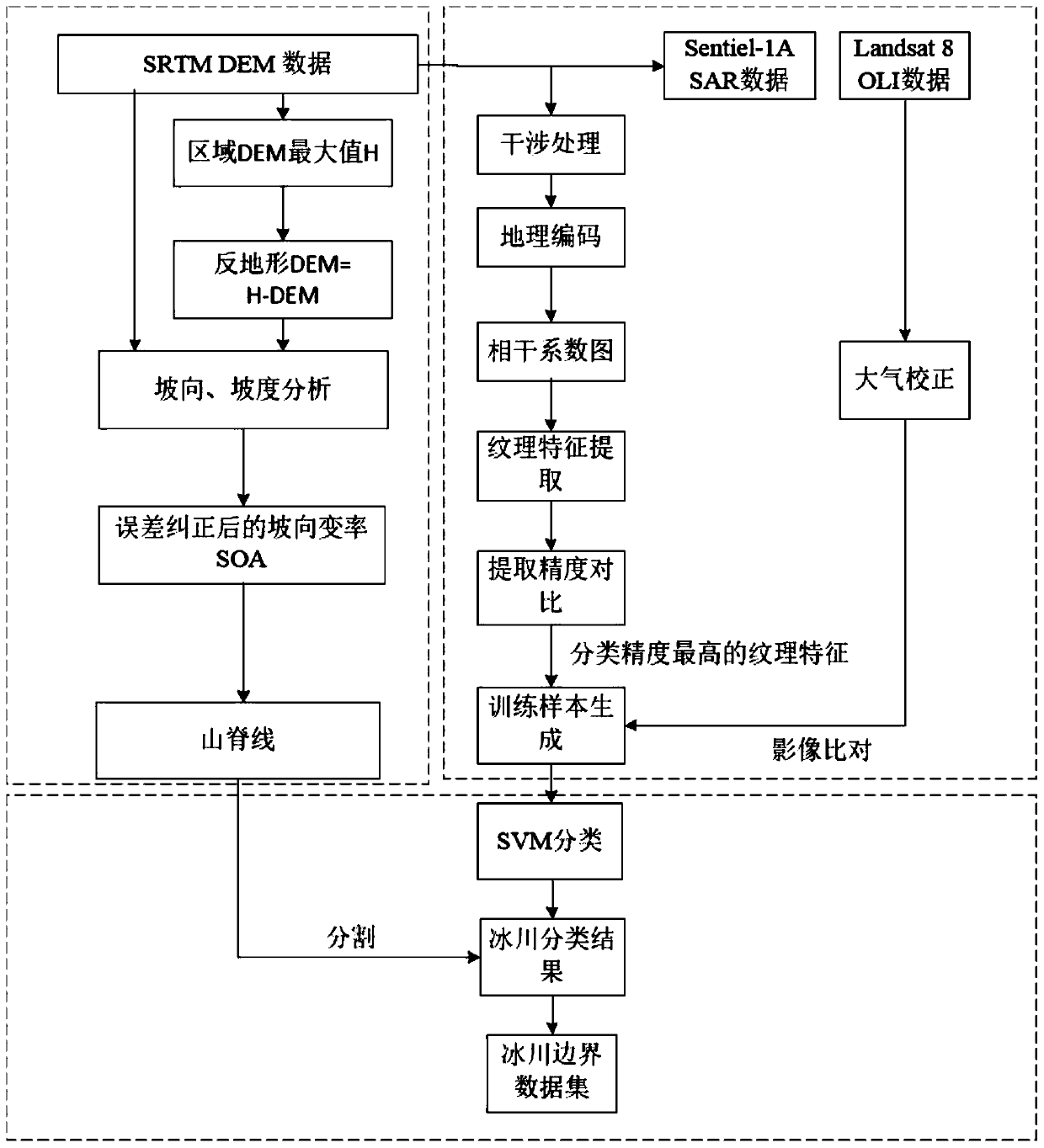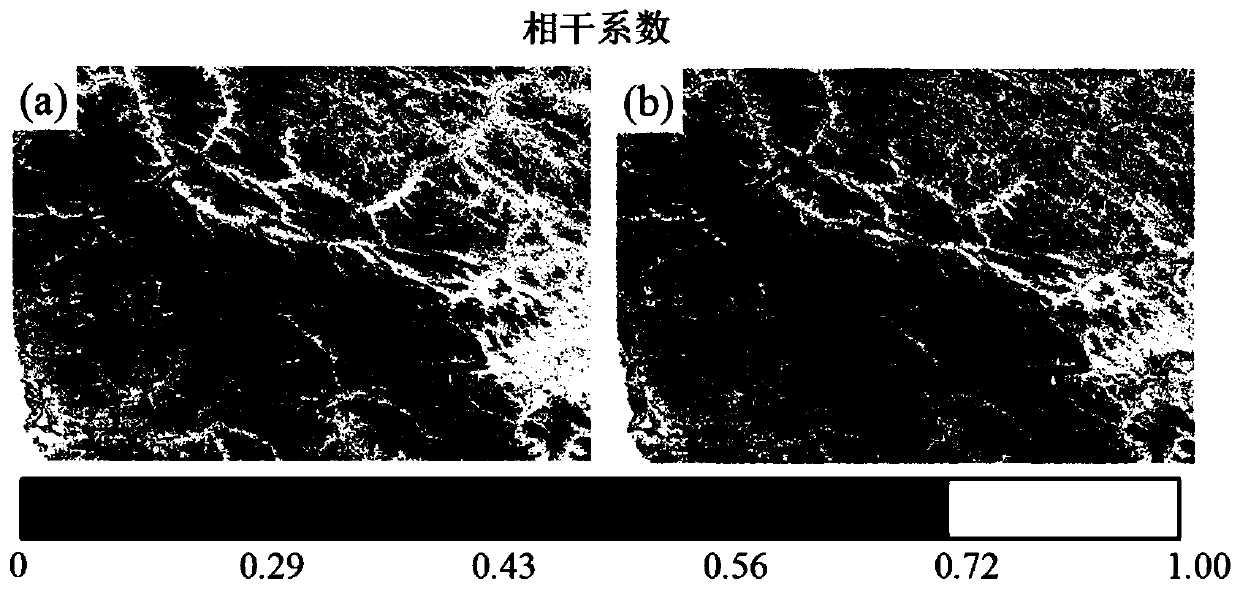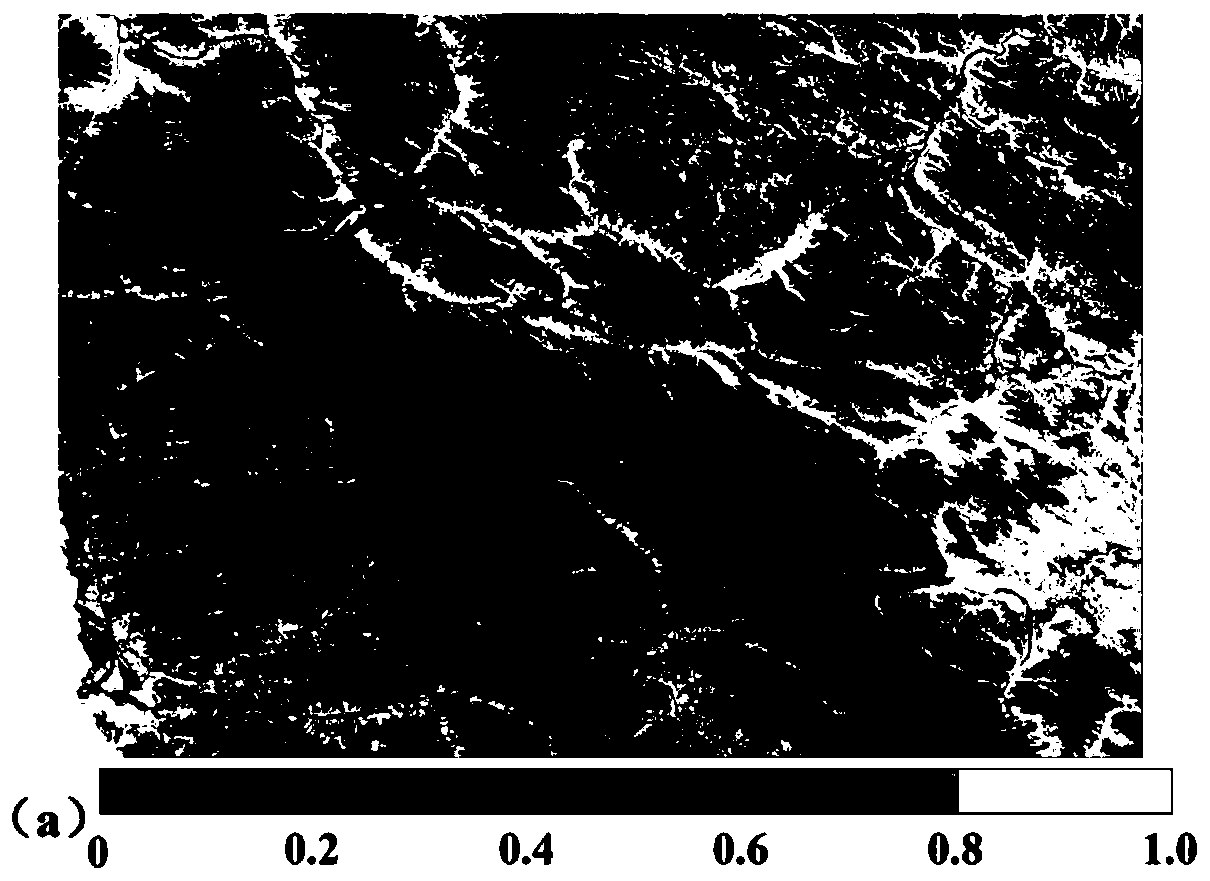SAR image glacier recognition method based on texture feature assistance
A technology of texture features and identification methods, applied in the field of remote sensing geoscience applications, can solve problems such as large influence, and achieve the effects of good classification effect, simple and easy execution steps, and simple data acquisition.
- Summary
- Abstract
- Description
- Claims
- Application Information
AI Technical Summary
Problems solved by technology
Method used
Image
Examples
Embodiment Construction
[0030] The present invention will be further described below in conjunction with the accompanying drawings. Make the technical route and operation steps of the present invention clearer. The example study area of the present invention selects the upper reaches of the Keleqing River (35.1°N-36.2°N, 76.3°E-77.9°E) in the Karakoram Mountains, and the Sentinel-1A data used are September 11 and September 2018 The SLC data of the two scenes on the 23rd, the time base is 12 days. Landsat8 OLI data was acquired on August 29, 2018. DEM data is SRTM Version4 data.
[0031] Such as figure 1 As shown, it is a flow chart of the SAR image glacier recognition method based on texture feature assistance in this embodiment, and the specific steps are as follows:
[0032] The first step is to prepare remote sensing image data and digital elevation model (DEM) data.
[0033] Step 1a, download the Sentinel-1A SLC data that the time interval of two scenes in a certain area is 12 days, both h...
PUM
 Login to View More
Login to View More Abstract
Description
Claims
Application Information
 Login to View More
Login to View More - R&D
- Intellectual Property
- Life Sciences
- Materials
- Tech Scout
- Unparalleled Data Quality
- Higher Quality Content
- 60% Fewer Hallucinations
Browse by: Latest US Patents, China's latest patents, Technical Efficacy Thesaurus, Application Domain, Technology Topic, Popular Technical Reports.
© 2025 PatSnap. All rights reserved.Legal|Privacy policy|Modern Slavery Act Transparency Statement|Sitemap|About US| Contact US: help@patsnap.com



